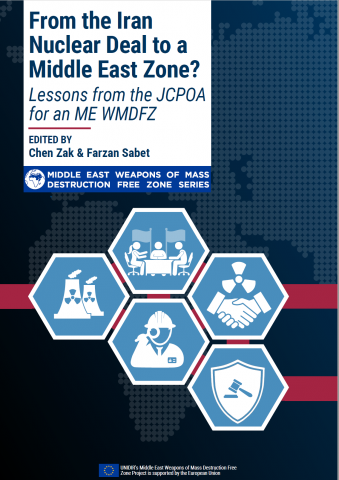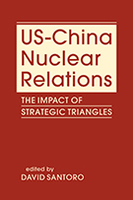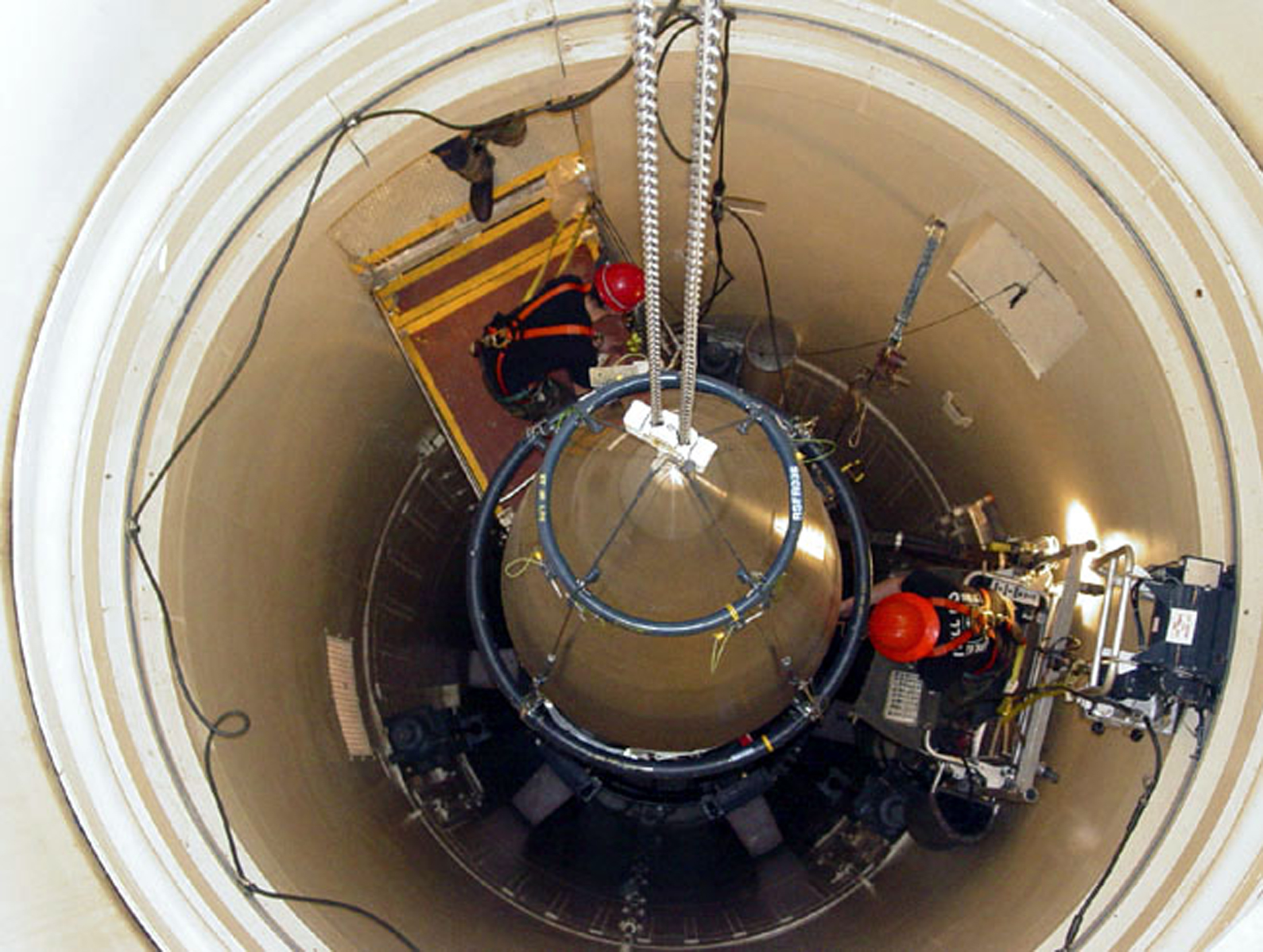

March 5, 2020 marks the 50th anniversary of the entry into effect of the Treaty on the Non-Proliferation of Nuclear Weapons (NPT). Five decades on, is the treaty achieving what was originally envisioned? Where is it succeeding in curbing the spread of nuclear weapons, and where might it be falling short? Four Brookings experts on defense and arms control weigh in to assess the NPT today.

Michael O’Hanlon (@MichaelEOhanlon), Director of Research and Senior Fellow in the Foreign Policy program: There are still more than 10,000 nuclear warheads on Earth. But I think the NPT, on balance, has been enormously successful.
Current arsenals are big, but they are only about one-fifth the size of what they were a half-century ago. While superpower arms control, and the end of the Cold War, deserve most of the credit for the reductions (along with restraint by China, in particular, in not building up too much), the NPT created some of the broader political context and moral pressure that led to these reductions. While it sought to prevent non-nuclear states from ever getting the bomb, its main bargain also required the existing nuclear weapons states to reduce and ultimately eliminate their arsenals to hold up their own ends of the bargain.
The arsenals of the United States and Russia still account for more than 90% of the total number of warheads on Earth today. The United Kingdom, France, China, India, and Pakistan each likely possesses between 150 and 300, with Israel’s unconfirmed arsenal totaling almost 100 bombs. North Korea probably has a couple dozen nuclear weapons, with enough fissile material to make a few dozen more. That said, the situation is not entirely grim. While nuclear proliferation continues, and nine countries are known to possess nuclear weapons, the fear once expressed by John F. Kennedy that at least a couple dozen countries could have the bomb by the 21st century has not panned out. And of course, nuclear weapons have not been used again in combat.
An additional achievement, for which a few of my colleagues here deserve some of the credit, is the tightening of inspection regimens under the NPT. In particular, the so-called “Additional Protocol” has created the right for inspectors to go to places where they suspect monkey business, even if those sites are not officially declared by the country in question. This arrangement tends to work only if national intelligence capabilities, and/or whistleblowers, provide information about suspicious activities. But at that point, inspectors can be more effective than in the years before the Additional Protocol concept was developed and legitimated. It has helped make the nuclear inspections in the Iran nuclear deal much more effective (even if other aspects of that deal have proven highly controversial). A similar concept would almost surely be used in any nuclear deal with North Korea in the years ahead.
On balance, I would give 2.5 cheers to the NPT!
Robert Einhorn, Senior Fellow in the Arms Control and Non-Proliferation Initiative: As we mark the 50th anniversary of the NPT’s entry into force, there is much to celebrate.
Without the treaty, the powerful norm against proliferation it created, its associated controls on exports of sensitive technologies, the rigorous International Atomic Energy Agency (IAEA) monitoring system, and the threat of sanctions for violating nonproliferation obligations, we would be living in the world of many nuclear-armed states that President John F. Kennedy predicted. As Mike points out, today there are only nine countries with nuclear weapons, the same number as 25 years ago — a remarkable indication of the NPT’s durability and its contribution to international stability.
Without the treaty, and the confidence provided by its IAEA verification system that nuclear equipment and materials would not be diverted to the production of nuclear weapons, the widespread use of nuclear energy for peaceful purposes would not have been possible — not just for electricity generation, but also for the production of isotopes for use in medicine, agriculture, and industry.
While the NPT’s central goal was to prevent additional nuclear-armed states, it sought to assure non-nuclear weapon states (who were required to renounce nuclear arms) that the asymmetry between them and the five original nuclear powers (who were allowed to keep their nuclear weapons) would not last forever. It therefore obligated the five — China, France, Russia, the U.K., and the U.S. — to make “good faith” efforts to reduce and ultimately eliminate their nuclear arsenals.
In the last 50 years, the United States and the USSR/Russia have made huge progress toward nuclear disarmament, reducing their nuclear weapons inventories by close to 90% from Cold War levels. Mike is right that they pursued nuclear arms limitations and reductions primarily because they believed such arms agreements would serve their own security interests, not because they were obliged to do so under the NPT. But Mike is also right that the NPT helped create the stable strategic framework in which such agreements were acceptable to the superpowers. And the desire of Washington and Moscow to ensure the success of the treaty and its nonproliferation goal gave them additional incentive to pursue nuclear disarmament.
So the NPT’s first 50 years have been remarkably successful. But there are warning signs that its continued success cannot be taken for granted.
The international security environment has become increasingly unsettled. U.S.-Russian and U.S.-Chinese bilateral relations have sharply deteriorated. With the growing strategic capabilities of additional countries, especially China, the bipolar model of stability has become outdated. New technologies and types of weapons — including offensive cyber, counter-space, and hypersonic weapons — could further destabilize the security environment.

Arms Control & Nonproliferation From the Iran nuclear deal to a Middle East Zone? Lessons from the JCPOA for an ME WMDFZ
International Affairs Technological Change and the Future of WarfareMichael E. O’Hanlon

There are growing concerns not just that new nuclear arms reduction agreements are very unlikely, but that existing agreements, including the Intermediate-Range Nuclear Forces (INF) Treaty, are unraveling and that this could lead to renewed nuclear arms competitions and even increase the risks that nuclear weapons will once again be used.
It is not only the NPT’s disarmament goals that are at risk. There are fears that the number of nuclear-armed states could increase.
With U.S. withdrawal from the Joint Comprehensive Plan of Action (JCPOA) and Iran rebuilding its enrichment program, the JCPOA is hanging by a thread, and some Iranians are even talking about leaving the NPT. Meanwhile, the Saudi crown prince says the kingdom will acquire nuclear weapons if Iran does, and President Recep Tayyip Erdoğan asks why other countries can have nuclear weapons and Turkey cannot.
In Northeast Asia, U.S.-North Korea negotiations have ground to a halt, raising concerns in South Korea and Japan that Pyongyang’s nuclear capability may be permanent at a time when doubts have arisen about the reliability of U.S. alliance commitments and security guarantees, which have been the critical factor enabling those U.S. allies to renounce nuclear weapons of their own.
An additional warning sign is the continued polarization within the NPT membership, with non-nuclear NPT parties — especially among the non-aligned — concerned that that the NPT nuclear powers — particularly the United States and Russia — are not taking their nuclear disarmament commitment seriously. This concern gave impetus to the negotiation of the Treaty on the Prohibition of Nuclear Weapons, which the five NPT nuclear weapons states and most of their allies strongly oppose.
These challenges to the future of the NPT and the broader global nonproliferation regime will be addressed at the upcoming April-May NPT Review Conference, a conference of NPT parties held every five years to review the operation of the treaty and consider means to strengthen it. The review conference is likely to be a contentious one. But given the deep reservoir of members’ support for the treaty, it is possible that, despite their differences, they will be able to come together on a conference outcome that reaffirms the essential role of the NPT in strengthening international security and pledges their support for a strong and durable treaty for many years to come.
Nothing could better ensure a positive review conference outcome than a Trump administration decision to join with Russia in extending the New START Treaty for another five years, which would preserve predictability and transparency in the U.S.-Russian strategic relationship and provide the breathing space needed to consider how to promote stability and future arms control measures in the increasingly complex and challenging international security environment we are now facing.

Steven Pifer (@steven_pifer), Nonresident Senior Fellow in the Arms Control and Non-Proliferation Initiative: Mike and Bob are correct: The N PT has been largely successful. While President Kennedy in 1963 pessimistically opined that there could be as many as 20 nuclear-armed states by 1975, today there are only nine. As a result of arms reduction agreements and unilateral decisions, both Washington and Moscow have dramatically cut their nuclear arsenals from peaks of over 30,000 and 40,000 weapons respectively to active arsenals today of under 4,500 weapons each.
That’s good news, to be sure. But there are reasons for unease as we mark the 50 anniversary of the NPT and approach the treaty’s five-year review conference, which begins on April 27. As Bob noted, the international environment has deteriorated, the Joint Comprehensive Plan of Action regarding the Iranian nuclear program is in deep trouble, and no progress has been made in persuading North Korea to forgo or even cap its nuclear arsenal.
Moreover, Russia, China, and the United States are modernizing their strategic nuclear forces. The Russians declined a U.S. proposal to follow up the 2010 New Strategic Arms Reduction Treaty (New START) with a new bilateral negotiation to cover all their nuclear arms, citing concerns about missile defense and conventional strike weapons. The 1987 INF Treaty has collapsed, and New START expires in less than one year unless the United States and Russia agree to its extension. The Trump administration now calls for a trilateral U.S.-Russia-China negotiation to cover all nuclear weapons, but appears unprepared to offer anything that would entice Moscow or Beijing to agree.
The nuclear weapons states — the United States and Russia, in particular — still base their security largely on nuclear deterrence. Nuclear deterrence likely prevented a superpower conflict during the Cold War. It should also be noted, however, that deterrence at several points almost failed, and the consequences would have been catastrophic. The risk of deterrence failure will remain as long as countries maintain nuclear arsenals.
The lack of recent progress by the nuclear weapons states to further reduce their arsenals — with the NPT’s ultimate goal of complete nuclear disarmament nowhere in sight — frustrates many non-nuclear weapons states and gave birth to the 2017 Treaty on the Prohibition of Nuclear Weapons. Ongoing nuclear modernization programs, the INF Treaty’s demise, uncertain status of New START, and lack of progress on bringing the 1996 Comprehensive Test Ban Treaty into force will make the review conference a difficult one for the nuclear weapons states, particularly the United States and Russia.
Washington and Moscow could help themselves by agreeing to extend New START to 2026 and launching in-depth strategic stability talks to cover nuclear weapons and the full range of associated issues, including missile defense, long-range conventional strike arms, hypersonic weapons, and the impact of developments in the cyber and space domains. It would be useful to engage China in strategic stability discussions as well.
Unfortunately, there appears little prospect of this in the near future. So, as Bob wrote, the review conference will likely be a rough on e.
Frank Rose, Senior Fellow in Security and Strategy: I largely agree with the points that Mike, Bob, and Steve have made regarding the important role that the NPT has played in advancing nonproliferation and international security since it entered into force 50 years ago.
But as the others have noted, disagreements between nuclear weapons states and non-nuclear weapons states over the future of nuclear disarmament will likely make reaching consensus on a final document at the upcoming NPT Review Conference extremely difficult to achieve. This is due, in part, to the fact that the international security environment has changed fundamentally since the NPT was extended indefinitely in 1995.
The international security environment has changed fundamentally.
At the time, relations between the major powers — in particular, the United States, Russia, and China — were trending in a much more positive direction. Indeed, the overarching foreign policy objective of the United States and its partners at the time was to integrate Russia and China into the U.S.-led international order. This relatively benign political environment allowed the international community to make significant progress on numerous bilateral and multilateral arms control disarmament, and risk reduction efforts like the START I, the Chemical Weapons Convention, the Comprehensive Test Ban Treaty, the Moscow Treaty, New START, and the Cooperative Threat Reduction program.
Our colleague Tom Wright has described this as the “era of convergence ” in which it was hoped the major powers would stop treating each other as rivals and begin to work together to tackle common challenges like nonproliferation. But as he notes in his excellent book “All Measures Short of War: The Contest for the 21st Century and the Future of American Power”:
The era of convergence came to an end because Russian and Chinese leaders believed that the liberal international order posed an existential threat to their regimes…And so, as China rose, and Russia regained strength, they began to push back, hard.
As political tensions between the major powers have re-emerged, the prospects for further progress on disarmament have — not unsurprisingly — stalled. This is unlikely to change until the underlying political issues contributing to the re-emergence of major power tension are addressed. That said, the lack of progress on disarmament should not prevent the major powers from taking pragmatic actions to reduce risk, enhance stability, and lay the groundwork for future progress.
As I have written elsewhere, one of the most effective near-term actions the United States could take would be to extend the New START nuclear arms control treaty with Russia, which is scheduled to expire in February 2021. Through its inspections, data exchanges, and notifications, the treaty will help maintain stability and reduce the risk of miscalculation. Extension of New START should be accompanied by the establishment of bilateral U.S.-Russia strategic stability talks that establishes a formal mechanism to: 1) address the strategic concerns of both parties; and 2) lay the foundation to develop a new arms control and strategic stability framework to replace New START when it ultimately expires. Such a framework will most certainly need to include third-parties (e.g. China) and emerging technologies like cyber, anti-satellite, and hypersonic weapons.
Furthermore, the United States should also begin a serious bilateral dialogue with China, with the ultimate objective of including China in a future framework. As I have written previously, there are several practical steps the Trump administration could take to advance the dialogue with China, such as establishing a link between the U.S. Nuclear Risk Reduction Center and a similar organization in China; negotiating a bilateral missile pre-launch notification regime; and developing norms to ensure the safety, sustainability, and security of the outer space environment.
In conjunction with bilateral efforts, the five permanent members of the United Nations Security Council should continue their efforts to explore ways to reduce risk, especially regarding emerging technologies.
While nuclear disarmament as outlined by Article VI of the NPT remains a long-term goal, it is unlikely to occur in the near term due to the changed international security environment. However, there are several practical steps that the United States and other major powers could take to reduce risk, enhance stability, and lay the groundwork for future progress. It is on these steps that the international community should focus its efforts.

U.S. Defense Policy Deterrence, modernization, and alliance cohesion: The case for extending New START with Russia